
5G für IoT
Die Zukunft ist jetzt – 5G für das Internet of Things
Die Zukunft ist jetzt – 5G für das Internet of Things
Die Zukunft ist jetzt – 5G für das Internet of Things
Die Zukunft ist jetzt – 5G für das Internet of Things
Herausforderung:
Der Austausch von beschädigten Bauteilen in Anlagen der Industrie muss schnell vonstattengehen, um hohe Kosten durch den Betriebsausfall zu vermeiden. Oft findet sich aber aufgrund des Fachkräftemangels kein spezialisierter Servicetechniker, der zeitnah anreisen und das Bauteil austauschen kann.
Lösung:
Mithilfe einer Virtual-Reality-Brille kann ein Servicetechniker den Schaden begutachten, ohne vor Ort zu sein. Durch die hohe Auflösung und die dreidimensionale Wiedergabe, die dank der 5G-Bandbreite möglich ist, kann er sich ein genaues Bild des Aufbaus der Anlage und des Schadens machen und so einen weniger spezialisierten Techniker beim Austausch des Bauteils anleiten und beraten. So kann das Ersatzteil schneller eingebaut und Kosten durch einen längeren Betriebsausfall vermieden werden.

Herausforderung:
Überwachungskameras in Fabriken und Unternehmen, im öffentlichen Raum und bei Großveranstaltungen produzieren extreme Mengen an Daten, die archiviert werden müssen. Oft ist eine Kabelverbindung nicht möglich und aktuelle drahtlose Vernetzungen bieten nur eine begrenzte Bandbreite. Dies führt dazu, dass die Bildqualität schlecht ist und Details wie zum Beispiel Merkmale von Straftätern nicht zu erkennen sind.
Lösung:
Mit 5G lassen sich Überwachungskameras drahtlos und mit großer Bandbreite vernetzen. So können sie flexibel aufgestellt werden, wo Bedarf ist. Über das 5G-Netz können große Mengen an Videomaterial in der Cloud gespeichert werden – in bester Qualität. Darüber hinaus ist eine Auswertung durch eine künstliche Intelligenz möglich, die zum Beispiel einen Einbruch automatisch erkennt.
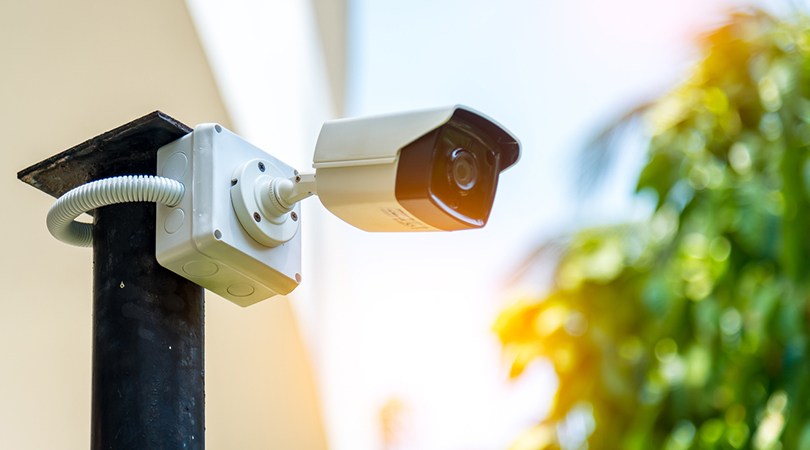
Herausforderung:
Strom wird weniger in Großkraftwerken erzeugt und mehr durch zahlreiche Haushalte und Firmen, die über Solarpanels oder Windräder verfügen. Deren Stromproduktion schwankt aber stark. Um das Stromnetz stabil zu halten, ist eine intelligente Steuerung notwendig, die in Echtzeit weiß, wann wo wie viel Strom produziert oder verbraucht wird.
Lösung:
Durch 5G vernetzte intelligente Stromzähler – auch Smartmeter genannt – liefern ohne Verzögerung Daten zum Verbrauch. Das 5G-Netz hat zudem die Kapazität, eine große Zahl von Stromzählern drahtlos zu verbinden.
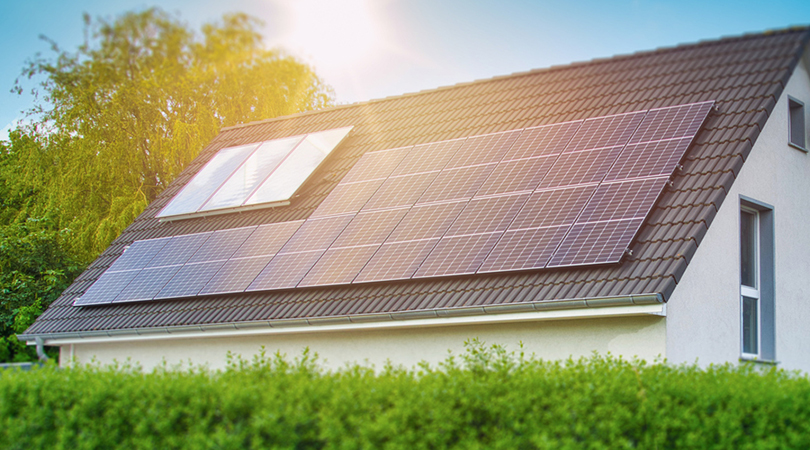
Herausforderung:
Ärzte, Therapeuten, Pflegedienste oder Apotheker haben nur begrenzte Kapazitäten – und können immer nur an einem Ort gleichzeitig sein. Gerade in ländlichen Gebieten fehlt es oft an Medizinern.
Lösung:
Ein Großteil der Aufgaben in Arztpraxen sind wiederkehrende Termine für chronisch Kranke: Werte müssen kontrolliert und ein Rezept ausgestellt werden. Dabei ist es nicht unbedingt notwendig, dass der Arzt bei dem Patienten vor Ort ist. Arztgespräche können per Videocall durchgeführt werden und medizinische Geräte können ihre Daten über das Internet an den Arzt schicken. Für Patienten in ländlichen Regionen, in denen ein Ärztemangel herrscht, bedeutet dies eine große Entlastung. Dank der niedrigen Verzögerungen von 5G können Ärzte selbst Operationen mittels eines Roboters aus der Ferne durchführen.

Herausforderung:
Landwirte müssen sich ein genaues Bild vom Zustand ihrer Nutzpflanzen machen. Haben Sie genug Dünger und Wasser? Sind sie von Krankheiten oder Ungeziefer befallen? Bei vielen Hektar großen Feldern ist es eine schwierige Aufgabe, einen Überblick über den Zustand der Pflanzen zu bekommen.
Lösung:
Kamera-Drohnen können viele Hektar von Äckern in kurzer Zeit überfliegen. Dank 5G können sie hochauflösende Bilder in die Cloud senden. Dort wertet eine künstliche Intelligenz die Farben der Blätter aus und bemerkt Stress-Symptome bei Pflanzen sofort. Auch Besprühen der Gewächse bei Schädlingsbefall ist möglich. Nebenbei erkennen die Drohnen auch Rehkitze, die in den Feldern liegen – und verhindern, dass diese von Mähdreschern erfasst werden.
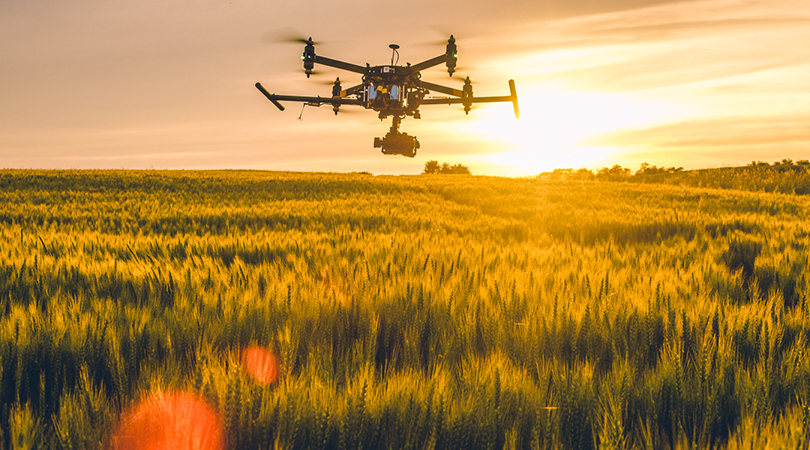
Herausforderung:
Der Fachkräftemangel ist ein großes Problem für die Baubranche. Es fehlt an Baggerführern und LKW-Fahrern.
Lösung:
5G ermöglicht es, dass Baufahrzeuge Abraum selbstfahrend abtransportieren. Indem Bagger die Transportfahrzeuge automatisch informieren, wenn Aushub abgeholt werden muss, wird ein optimaler Arbeitsablauf sichergestellt. Besonders im Bergbau, wo extrem große Mengen von Abraum beseitigt werden müssen, können autonome Muldenkipper und Planierraupen die Prozesse sicherer und effizienter gestalten.
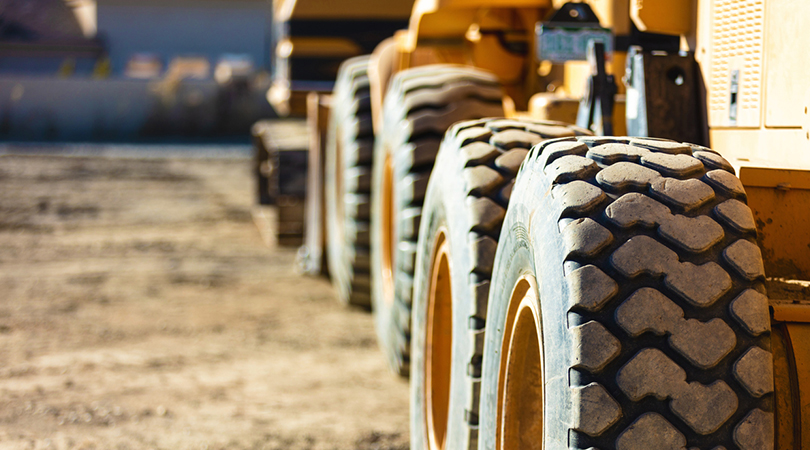
Herausforderung:
Wenn Landwirte Saatgut, Dünger oder Pestizide auf ihren Feldern ausbringen, fahren sie diese in parallelen Bahnen ab. Dabei kommt es zu Ungenauigkeiten, die dazu führen, dass Pflanzen zu dicht beieinanderstehen oder dass manche Stellen zu viel Dünger erhalten und andere zu wenig. Auch der Fachkräftemangel macht sich in der Landwirtschaft bemerkbar. So wird es immer schwieriger, ausgebildete Fahrer und Fachkräfte zu finden.
Lösung:
Autonome Traktoren und Mähdrescher können aus der Ferne gesteuert werden – dafür sind keine Fachkräfte notwendig. Zudem fahren sie die Bahnen zentimetergenau ab. Dadurch können Dünger und Pestizide effizienter eingesetzt werden. Da sie immer genau in den gleichen Bahnen fahren, verdichten sie zudem weniger Bodenfläche.
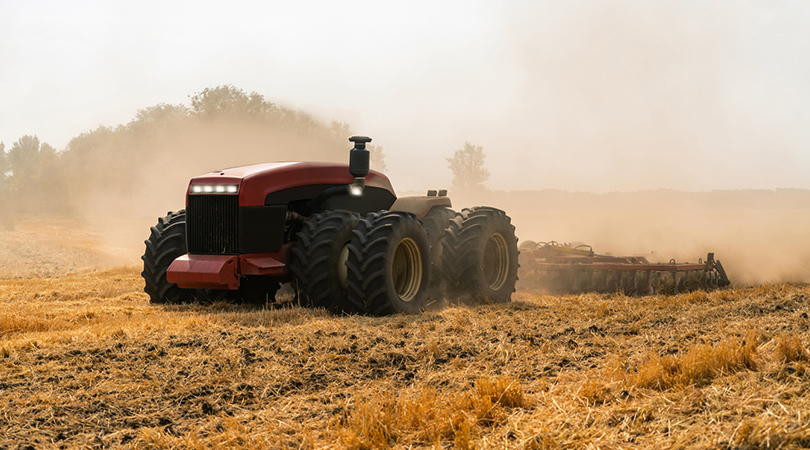
Das 5G-Netz der Deutschen Telekom erreicht bereits 98 Prozent der deutschen Bevölkerung – und wird von Quartal zu Quartal größer. Eine derart flächendeckende Versorgung mit 5G bietet kein anderes Mobilfunkunternehmen in Deutschland.
Mit dem 5G Netz der Deutschen Telekom gestalten Sie Ihre globalen Projekte einfach. Dank 5G-Roaming in über 165 Netzwerken und 76 Ländern, darunter USA, China, Südkorea und Frankreich, profitieren Sie von einer globalen Abdeckung, die kein anderer europäischer Anbieter bietet.
5G wurde mit einem Fokus auf Sicherheit entwickelt. Es unterstützt modernste Verschlüsselungsverfahren, bietet eine verbesserte Geräte-Authentifizierung und schützt die Integrität der übertragenen Daten. Zudem lassen sich Netzwerke flexibel gestalten – etwa als abgeschirmte private 5G-Campusnetze, bei denen Unternehmen das Netz exklusiv vor Ort betreiben. Das erhöht die Kontrolle über Datenflüsse und schützt sensible Informationen, etwa in der Industrie oder im Gesundheitswesen.
5G gibt es in zwei Ausbaustufen:
5G NSA (Non-Standalone) kombiniert 5G-Antennentechnik mit dem bestehenden 4G-Kernnetz. Es erlaubt höhere Bandbreiten als LTE, jedoch mit eingeschränkter Latenz und weniger 5G-spezifischen Funktionen.
5G SA (Standalone) nutzt hingegen ein eigenes, vollständig neues 5G-Kernnetz. Es bietet alle Vorteile von 5G – wie ultraniedrige Latenz, Network Slicing und höchste Flexibilität. Für anspruchsvolle IoT-Szenarien wie autonome Logistik oder industrielle Automation ist 5G SA die zukunftssichere Lösung.
Ob bestehende Geräte 5G nutzen können, hängt von ihrer Hardware ab. Viele aktuelle IoT-Geräte basieren auf LTE (4G) oder NB-IoT. Um das volle Potenzial von 5G auszuschöpfen, sind 5G-fähige Module erforderlich. Der Umstieg muss jedoch nicht sofort erfolgen: Multimode-Module und kombinierte Netzlösungen ermöglichen eine schrittweise Migration. So können Unternehmen bereits heute starten und ihre Infrastruktur zukunftssicher erweitern.
Latenz beschreibt die Verzögerung bei der Datenübertragung – also die Zeit, die ein Datenpaket benötigt, um von einem Gerät zum Ziel und zurück zu gelangen. Im 5G-Netz kann die Latenz auf unter 10 Millisekunden sinken. Das ist entscheidend für Anwendungen, bei denen jede Millisekunde zählt – zum Beispiel bei vernetzten Robotern in der Produktion, autonomen Fahrzeugen oder AR/VR-Anwendungen. Eine niedrige Latenz sorgt für schnellere Reaktionszeiten, mehr Präzision und damit höhere Effizienz und Sicherheit im IoT-Einsatz.
Network Slicing ermöglicht es, ein physisches 5G-Netz in mehrere virtuelle Netzwerke („Slices“) aufzuteilen – jedes mit eigenen Leistungsmerkmalen wie Bandbreite, Latenz oder Sicherheit. Unternehmen können so ein dediziertes Netz für spezifische Anforderungen nutzen, etwa für Produktionssteuerung, Fernwartung oder kritische Infrastrukturen. Der große Vorteil: Die Slices sind voneinander unabhängig und garantieren eine zuverlässige Netzqualität – auch bei hoher Auslastung im öffentlichen Netz.